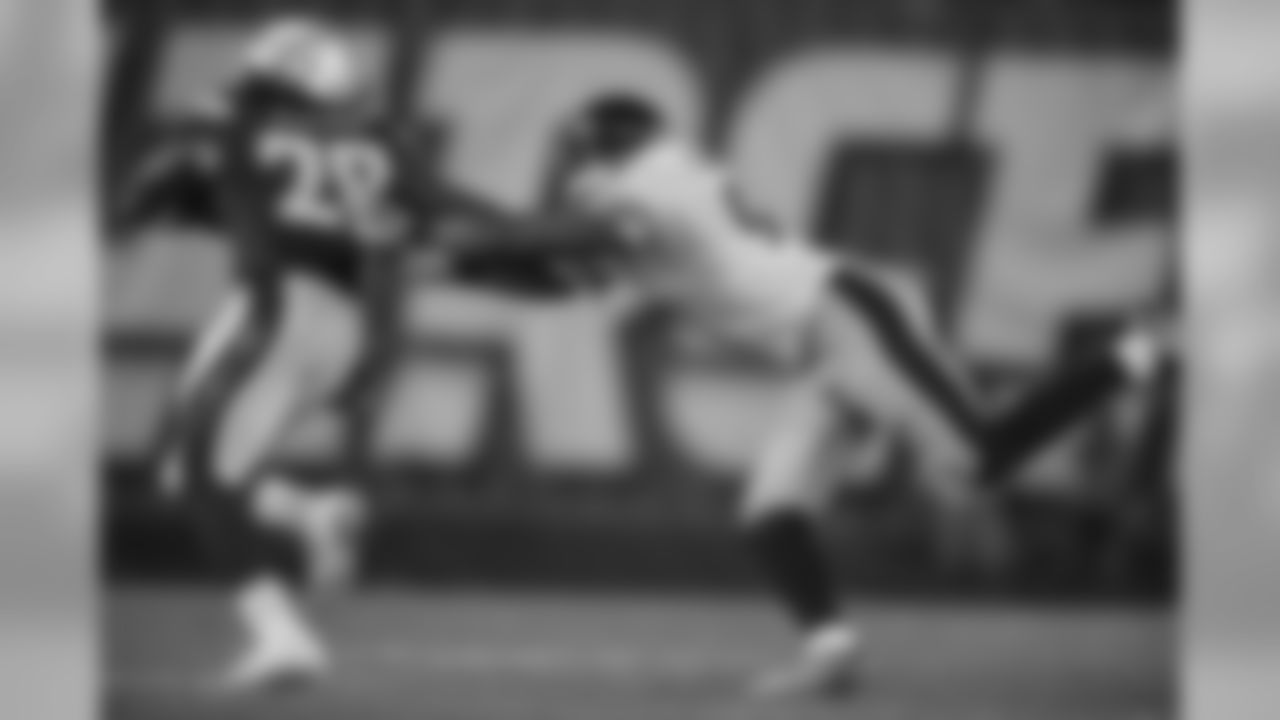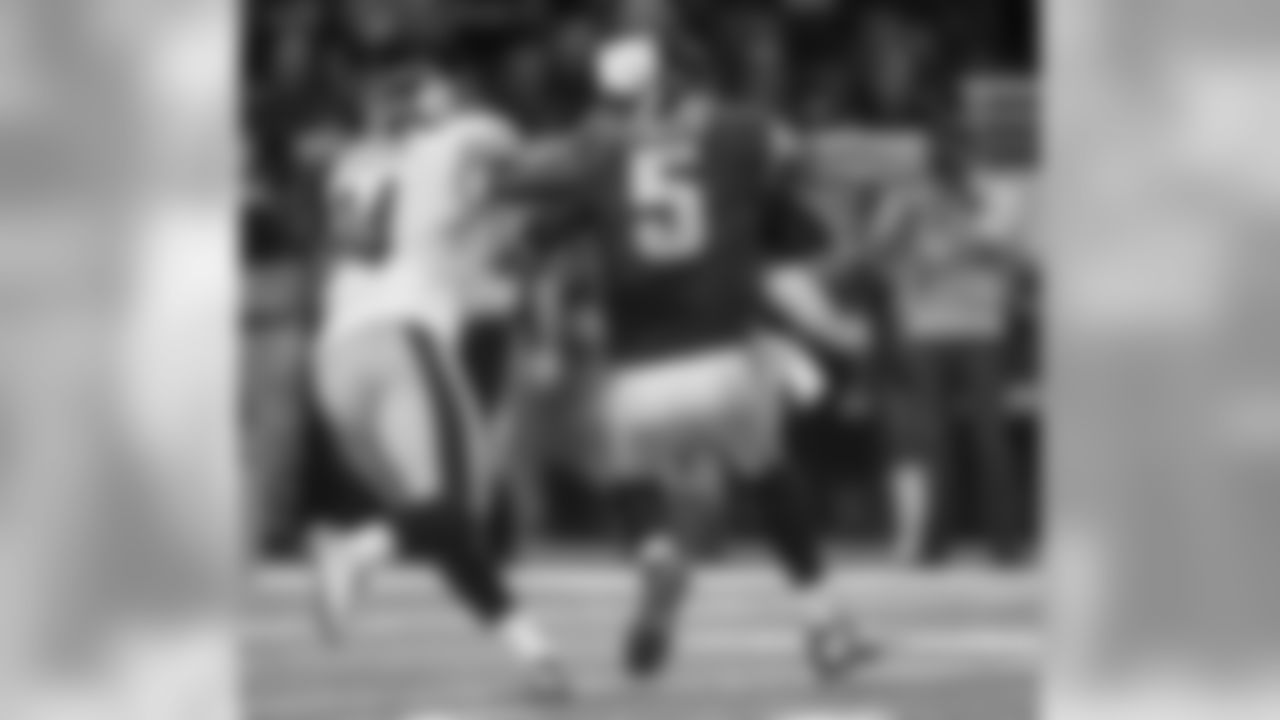Let's get to it:
NIKOLA BUTIRIC FROM SERBIA:
Hi, from Steelers Nation in Serbia. Love Asked and Answered. If I remember correctly, a few years ago the NFL moved kickoffs up 5 yards from the 30-yard line to the 35-yard line. Why was that done? Now we rarely see returns, just mostly touchbacks because the ball is often kicked out of the end zone.
The NFL is getting exactly what it wanted when it moved the kickoffs, and as you pointed out what it wanted was more touchbacks. While fans love the excitement and high-speed collisions often associated with a kickoff return, the league decided that was leading to too many concussions. And so this change was made in an effort to cut down on the numbers of plays in a game where 11 players on one team get a running start and sprint about 50 yards where they then engage in full-speed collisions with 11 players from the other team.
The best photos of Linebacker Lawrence Timmons from the 2015 season.






















FRANK RIZZO FROM PONCE INLET, FL:
Is it just me or is Lawrence Timmons slowing down? He is not making plays like he has in previous years. He is not covering tight ends very well and his tackling is lacking.
It's just you.
WAYNE BENNER FROM DAVENPORT, FL:
Why is it every week we give the opposing quarterback a ton of yards off 5-to-7 yard passes where the cornerbacks are 10 yards or more off the line of scrimmage? I wish I knew the amount of yards I have seen the secondary give up when the opposing team had a third-and-3 and our coverage is 10 yards downfield. Why can't they play up on the line of scrimmage and jam the receivers and stop giving up those short gains that give the other team a first down?
First of all, it's important to understand there is no such thing as a defense that stops everything. NFL players are too good, and the rules of the game pertaining to defending the pass – limits on contact on receivers before the ball is thrown and once it arrives at the target, and how a quarterback can and cannot be hit – have been designed with the idea of injecting more offense into the product. That said, I also have no real sense of how many times the scenario you describe actually has happened, and I'm certainly not going to trust that a question submitted to Asked and Answered is 100 percent factually accurate, i.e., "a ton of yards." But I can recall instances where it has seemed to be too easy of a pitch-and-catch on some possession downs where the coverage seemed to be playing too soft on a particular receiver or possibly on one side of the formation. There's also this: one element this Steelers defense has worked hard to eliminate/limit are deep passes that end up in the end zone, and there has been considerable progress in that area. In 2014, the defense allowed 10 touchdown passes of 25-or-more yards, with five of those being 50-or-more yards. This season, through eight games, the defense has allowed only one of those, and that came in garbage time of the 43-18 win over the San Francisco 49ers. Through the first half of 2015, the defense has allowed 14 touchdowns – 1.75 per game – and 147 points – an average of 18.4 per game. I suggest focusing more on those numbers than becoming overly frustrated when an opponent gets a first down.
STEVE EARHART FROM CAMARILLO, CA:
I know a lot has been said about the lack of quality in the defensive backfield, but I don't think that it is all due to lack of talent. Antwon Blake, Will Gay, and Ross Cockrell have played OK, and at times pretty good. Mike Mitchell is turning into the hammer we all hoped for. The defensive front has certainly applied more pressure to the quarterback this year than they did last year, but with all that it still seems like too many receivers are ridiculously wide open at times. Do you contribute this to the scheme being employed, is it a lack of talent, or do you think it's a combination of both?
**
I think you're not giving enough credit to the opponent for having a passing attack that is capable of making plays as well. To some degree, NFL coaches have to accept that opponents are going to get receivers wide open and they're going to complete passes to those wide open receivers, but where they are less willing to compromise are in the areas of missed tackles and allowing big plays for touchdowns. As mentioned in the above answer, the Steelers have done a nice job of cutting down on big plays for touchdowns, but there have been some games where the tackling was less than crisp. Again, I would suggest focusing more on points allowed than yards allowed, and this Steelers defense has faced these four quarterbacks over the past five games – Joe Flacco, Phillip Rivers, Carson Palmer, and Andy Dalton – and the unit allowed those four quarterbacks to pass for five total touchdowns. And all due respect to Antwon Blake, Will Gay, and Ross Cockrell, all of those guys are more suited to backup/situational roles than being starting cornerbacks, if the Steelers' depth chart there was what they wanted it to be. What defensive coordinator Keith Butler has been doing in utilizing their skills and minimizing their weaknesses, and how those three players have been performing under some not-ideal circumstances, is deserving of praise.**
BILL JANUS FROM HAINESPORT, N.J.:
What is the respective contract situations with Sean Spence and Vince Williams? I think they played well in Ryan Shazier's absence. I hope the Steelers can at least keep one of them.
Sean Spence signed a four-year contract after being the Steelers' No. 3 pick in the 2012 NFL Draft. According to figures available on various websites dedicated to NFL players' contracts, Spence is earning $680,000 in base salary this year, which is the final year of his deal. He can become an unrestricted free agent next March. Vince Williams also signed a four-year after being a sixth-round pick in the 2013 draft. He is to be paid $675,000 in the final year of his contract, which is 2016, and he could become an unrestricted free agent in March 2017.
STEVE TRAUTMAN FROM SASKATOON, SASKATCHEWAN:
Attended my first Steelers game against Arizona, and it was a great experience. What is the history behind playing "Renegade" during games? Kind of a highlight.
Heinz Field would open for the 2001 NFL season, and during that time a new guy in the marketing department heard "Renegade," which first had been released by Styx in 1979, and thought it had some potential to get the crowd excited during games. The Steelers went about the process of securing permission from Styx to create a video using Renegade, and then it was to be played at appropriate times during games.
The song caught on during the 2002 season. That year, in a Wild Card playoff game vs. the Cleveland Browns at Heinz Field, the Steelers were losing, 24-7, when "Renegade" was played. The Steelers rallied. "Renegade" was played a second time during that game, and the Steelers completed an improbable comeback to cement a 36-33 victory. Ever since, "Renegade" has been part of the Heinz Field game day experience. According to statistics that are not verifiable, in 2008, during the Steelers run to a victory in Super Bowl XLIII, nine times after the song was played the defense either forced a turnover or stopped an opponent's drive.
By the way, the name of that new guy in the marketing department back in 2001: Mike Marchinsky, and he's still employed by the Steelers as a marketing manager/youth football. He's not nearly as new now as he was then, but then again none of us are.














